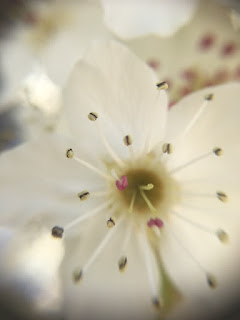Wednesday, March 29, 2017
Thursday, March 23, 2017
HDR Photography
Part 1:
HDR photography stands for high dynamic range. HDR photography produces a greater range of luminosity. It includes adapted images that appear better to the human eye. There are many efficient ways to create HDR photos. One way is through the use of a camera with an Auto Exposure Bracketing function. Another way would be to use an HDR photo-blending software that works to automatically enhance your photos.Part 2:
This example of an HDR photo really stood out to me. It includes a vivid array of colors that really catch the eye of the viewer. I like the illumination and the escalator running through the globe. I feel like it would be a really cool experience going up this escalator. In general, this image is very unique. From the constellations on the walls to the details throughout the image.
Part 3:
Landscape Photo Using HDR Photoshop
Wednesday, March 15, 2017
Abstracted Images
Image 1
Image 1 with Poster Edges Filter
Image 2
Image 2 with Plastic Wrap Filter
Image 3
Image 3 with Water Color Filter
Questions:
1. Which is your favorite shot and why?
My favorite shot is the third one because of the variety of colors in the image.
2. Which shot shows the best use of the elements of art?
The second shot shows the best use of the elements of art and seems visually proportional.
3. Which principles of design are used in your favorite image?
The third image shows balance, texture, color, and space.
4. Which image + filter is your favorite shot and why?
The third image with the water color filter is my favorite because of the deep contrast between black and white.
Thursday, March 9, 2017
Exploring Landscapes
Part 1:
1. Did you use the rule of thirds? What did you emphasize with it sky or land?
My favorite image is the third one. Yes, I used the rule of thirds while capturing the images on the camera. I tried to emphasize the land in the third image and focused on the large hill in the background.
2. What Principles of design did you use and how?
I used numerous principles of design in the third photo. I used balance, proportion, unity, and a sense of variety.
3. What time of day was your image taken? Was it a good time to shoot or not? Why?
The image was taken in the afternoon around 2:00 pm. I think it was a good time to shoot because it offered plenty of light and illumination throughout the image. It provided a clear image.
4. How did you use the foreground/background relationship?
The background depicts an amazing view of the hills of the San Ramon Valley. The foreground offers a close up shot of the Cal High. The foreground and background contrast each other and give viewers a great view.
Part 2:
Part 3:
Channel Mixer
Lab Color Method
Gradient Map
Desaturation
1. Which method do you think produced the best result for you?
In my opinion, the gradient map produced the best black-and-white image.
2. Did you achieve a large value range for each image? If not, which methods worked the best?
I think I did achieve a pretty good value range. Each image looks distinct and unique in its own way. The channel mixer in particular looked very nice and had a good value range.
Magic Glow Photoshop Tutorial:
Subscribe to:
Comments (Atom)

















